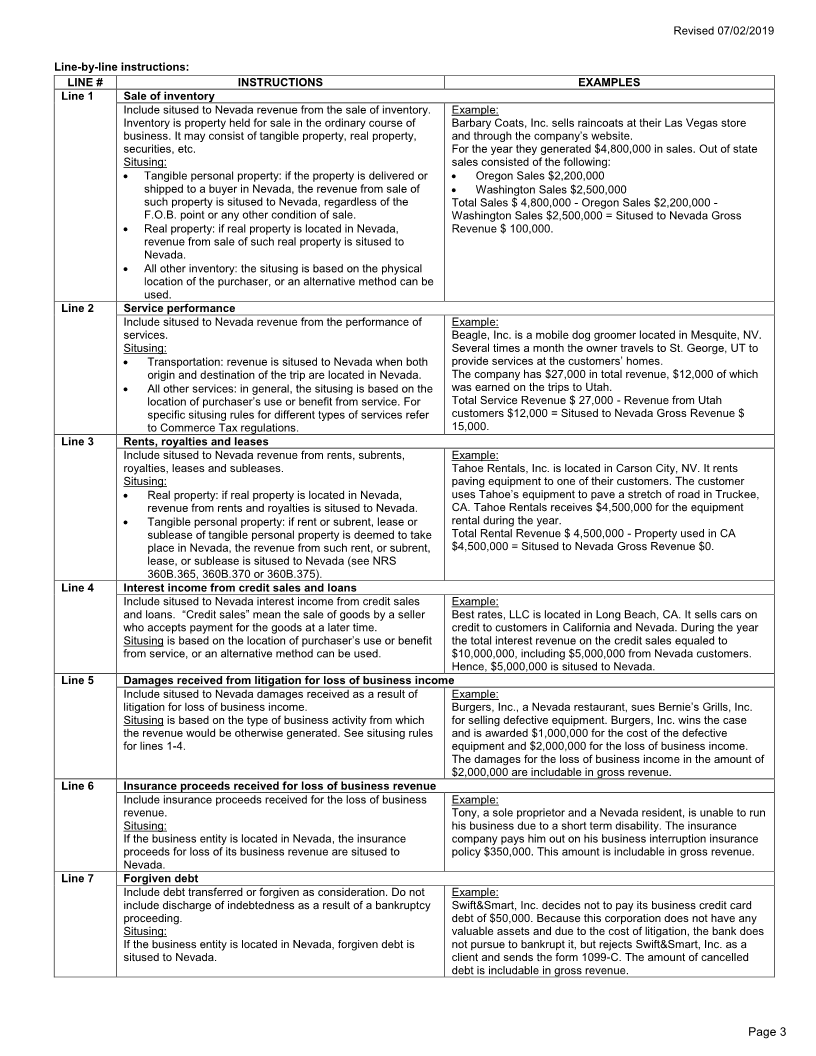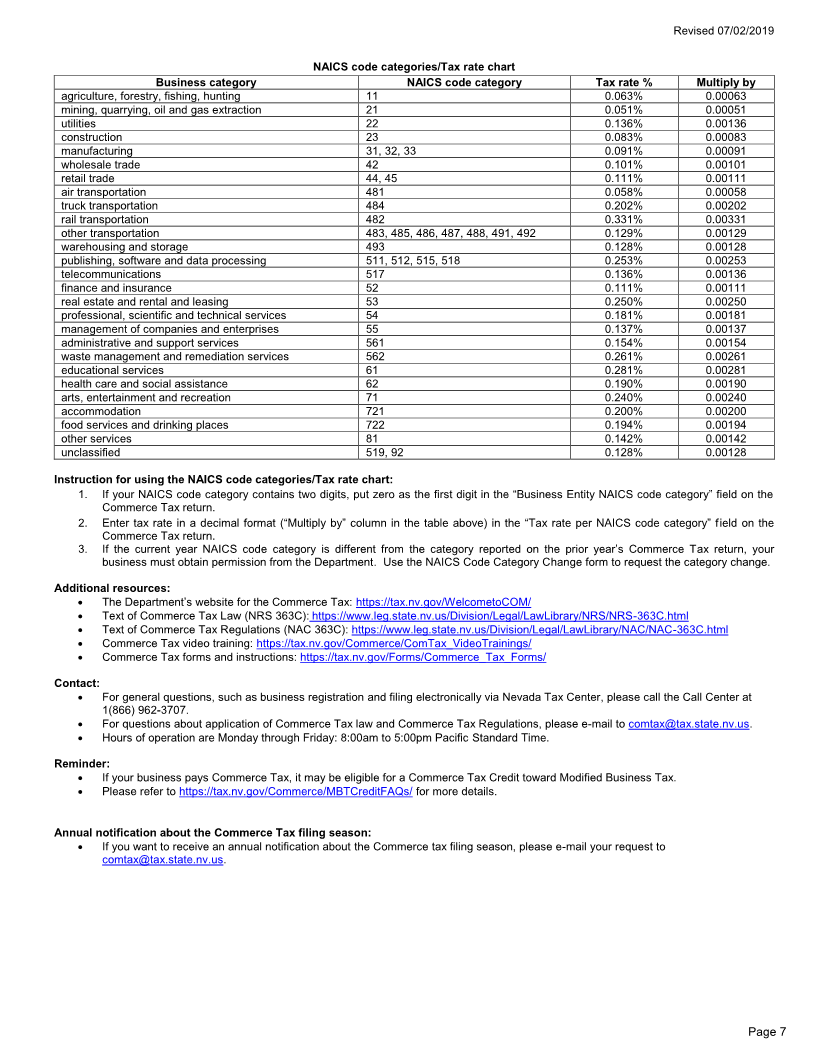
Enlarge image
Revised 07/02/2019
Nevada Department of Taxation
Instructions for Commerce Tax Return
What’s new
Starting with the 2018-2019 tax year the filing requirement for Commerce Tax has changed. Businesses, whose Nevada gross revenue during
the taxable year is $4,000,000 or less, are no longer required to file a Commerce Tax Return. Businesses, whose Nevada gross revenue for the
taxable year exceeds $4,000,000, are still required to file a Commerce Tax Return by the due date.
General instructions
Purpose of the form
Use the Commerce Tax Return form to report the gross revenue from engaging in business in Nevada and deductions of a business entity to
arrive at the amount of Nevada Commerce Tax for the taxable year July 1 through June 30.
Who must file
Each business entity, whose Nevada gross revenue exceeds $4,000,000 during the taxable year, unless specifically exempted by Commerce
Tax law (NRS 363C), has to file a Commerce Tax return.
If a merger or conversion, as ascribed by NRS 92A, takes place during the taxable year, the surviving/ resulting business entity may file a single
combined Commerce Tax return.
Taxable year
The taxable year is 12-months period beginning on July 1 stand ending on June 30 ofththe following year. If the business entity ceases to exist
before the end of the taxable year, input the date the entity ceased to exist in the second box of line “For the taxable year… through”. The box
“Business closed” should also be checked.
When to file
The Commerce Tax return can be filed between the end of the taxable year July 1 stand the due date of the Commerce tax return, - August 14th.
If the due date falls on a weekend, the Commerce Tax is due the next business day.
Where to file
Return can be filed electronically or on a hard copy.
1. To file electronically, go to: https://www.nevadatax.nv.gov/#
2. To mail a hard copy, use the addresses below:
NEVADA DEPARTMENT OF TAXATION
ATTN COMMERCE TAX REMITTANCE
PO BOX 51180
LOS ANGELES CA 90051-5480
Accounting method
The accounting method for the purposes of determining the amount of the Commerce Tax must be the same as the method used for federal
income tax purposes.
Recordkeeping
Each person responsible for maintaining the records of a business entity shall:
Keep such records as may be necessary to determine the amount of the liability of the business entity for Commerce Tax.
Preserve those records for 4 years from the date the Commerce Tax return is filed or Commerce Tax liability is paid or until any
litigation or prosecution pursuant to Commerce Tax law is finally determined, whichever is longer; and
Make the records available for inspection by the Department upon demand at reasonable times during regular business hours.
Amended return
If the original return filed is based on estimates, or if, after filing the return, you discover an error with the reported revenue, or deduction(s), you
should file an amended return. If you amend the return, check the box “Amended return”. Enclose supporting documentation, including
worksheet(s) and explanations, to the amended return and mail it to:
NEVADA DEPARTMENT OF TAXATION
1550 COLLEGE PARKWAY, SUITE 115
CARSON CITY, NV 89706
An amended Commerce Tax Return can be filed electronically. The supporting documentation still should be mailed. If a refund is sought, a
refund request statement should be included in the supporting documentation.
Extension of time to file and pay Commerce Tax
If you have good cause, you may request a 30-day extension to file and pay Commerce Tax. If the commerce tax is paid during the period of
extension, no penalty or late charge will be imposed for failure to pay the Commerce Tax at the time required, but the interest will accrue at the
rate of 0.75 percent per month from the date on which the amount of tax would have been due without extension until the date of payment. Use
the Application for 30-day Extension to File and Pay Commerce Tax form to request an extension. Submit the Application before the date on
which the payment of the Commerce Tax becomes due.
Page 1





